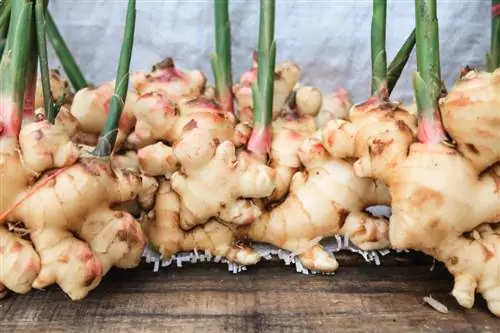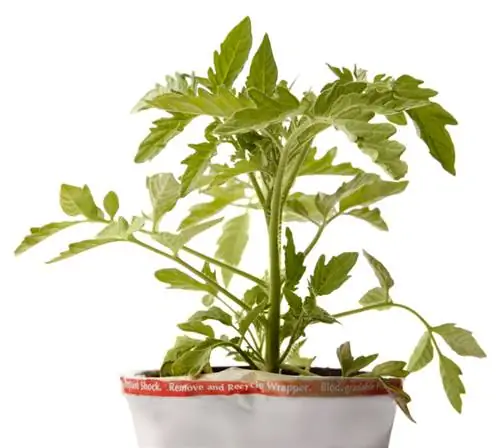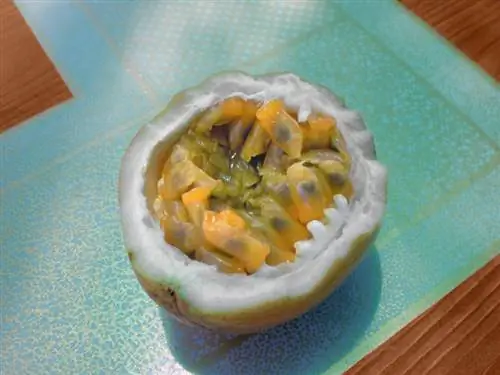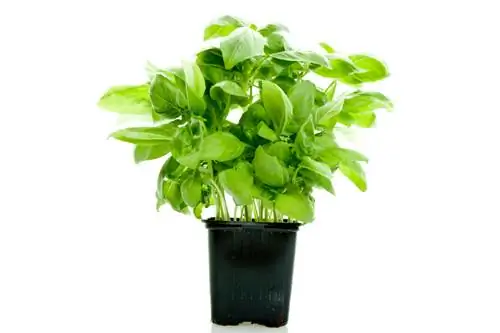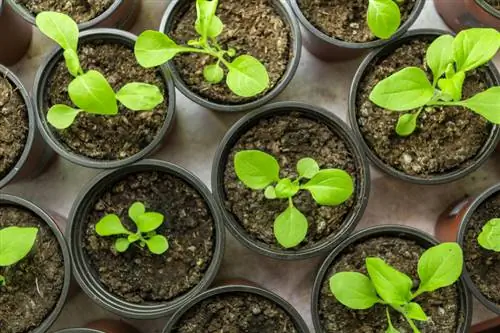- Author admin [email protected].
- Public 2023-12-16 16:46.
- Last modified 2025-01-23 11:19.
The ginger sold commercially for use as tea or spice usually comes from tropical regions, depending on the plant's needs. Growing ginger in a sunny location is also possible in this country without any problems.
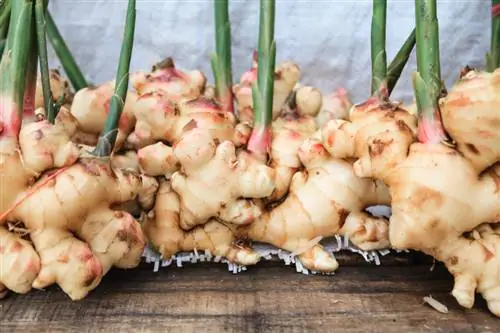
Is ginger cultivation possible in Germany?
Ginger can be grown successfully in Germany by selecting fresh root tubers, planting them in a pot in a sunny location and cultivating them there from March to November. Harvesting occurs when the ginger bulbs are large and aromatic.
Select fresh tubers for cultivation
To grow ginger, all you need is a few root tubers, which can now be found in the vegetable department of many grocery stores. When shopping, be sure to choose fresh and juicy tubers, as they are more suitable for growing ginger than dry and woody tubers. Sometimes light bud formation can be seen on tubers stored in a light area, which indicates that the tuber will soon sprout.
The right location ensures growth success
Ginger comes from tropical latitudes and in this country can only be grown as a seasonal potted plant or on the windowsill. Since it tolerates waterlogging poorly, cultivation in a container should be preferred over the garden soil. As a container plant, ginger is easier to care for and can also be easily moved to the sunniest location in the garden.
Season and cultivation period of ginger
Ginger can be left out in the garden from around March when the temperatures are frost-free. After a culture period of around 250 days, the ginger bulbs are large and aromatic enough to harvest in October and November. However, the green leaves of ginger can also be used as an ingredient in tasty summer salads. However, in view of the growth performance and the desired harvest quantity of the ginger bulbs, you should be careful not to cut off too many green leaves during the ginger's growing season.
The use of ginger as food
The spicy ginger bulb is said to have many positive he alth effects. Some ginger from the fresh tubers can be grated into a cup or pot and used to make a healing tea for colds and sore throats. The grated tuber can also be mixed with noodles or rice if you want to give delicious dishes an exotic and Asian flavor.
Drying and storing ginger
If ginger bulbs are stored at room temperature for longer than a few weeks, they can either dry out or sprout. Neither is necessarily desirable after the harvest in autumn, unless you want to grow sprouting tubers as houseplants in a sunny window. Ginger can of course also be frozen in portioned quantities, but the aroma is better preserved if thinly sliced ginger slices are dried.
Dry ginger in the oven and use it to stock up
Cut the excess ginger bulbs into thin slices and dry them in the oven at a maximum of 50 degrees Celsius until no more liquid comes out when you press on the slices. The ginger slices can then either be stored in a dry place until they are needed, or they can be crushed into practical granules using a spice grinder.
Tips & Tricks
The “Curcuma” variety is also a member of the ginger family, but it is known to us in a different form than the characteristic ginger bulbs. This type of plant provides the raw material for many curry spice mixtures from India.

